Is it possible to heat a private house without gas? The best alternative heating options
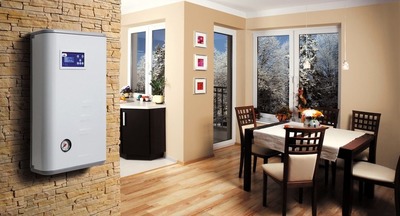
Constantly rising energy costs, as well as the absence of a gas main near the site, contributes to the growing popularity of various alternative systems heating.
For example, boilers that run on electricity or liquid fuel. Heating systems without gas differ reliability, durability, economy and practicality.
Content
What are the methods of heating a private house or country cottage without gas?
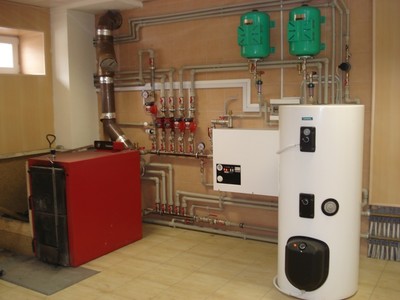
The most common way to heat buildings without using gas boilers is electric boiler.
The equipment requires an uninterrupted supply of electricity, but is inexpensive to maintain.
Another popular type of heating is stoves and fireplaces, which will be the optimal option for heating small-area buildings. Solid fuel boilers, operating on the principle of fireplaces, they can easily cope with heating spacious rooms.
Among alternative heat sources, geothermal systems deserve special attention. The units are expensive to purchase, but they pay for themselves. within two years and heat the house very economically over the course of 2-3 decadesAlso worthy of attention are automated liquid fuel boilers, in which there is no need to constantly monitor the system, and the efficiency reaches 98%.
Heating option using stoves and fireplaces
Heating stoves or fireplaces with water circuit are similar in design to solid fuel boilers. The circuit with the coolant is connected to the heating system of the house, which ensures uniform heating of the room.
During combustion of wood or alternative materials the liquid is heated in the pipes, located between the walls of the device. Built-in automation measures the temperature of the coolant and, in accordance with the specified program, turns on the circulation pumps. Automatic air supply regulators control the combustion processes in the stove or fireplace and ensure independent ignition of the wood, as well as its afterburning.
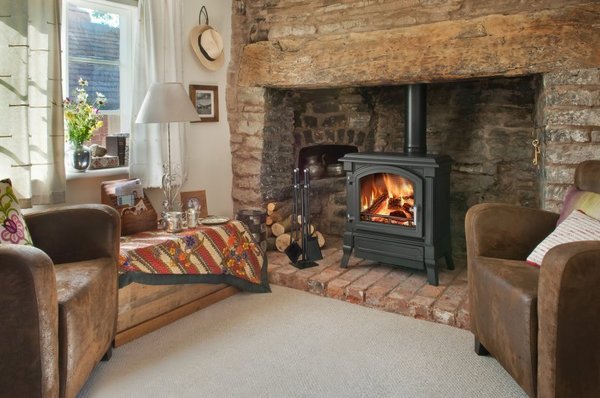
Photo 1. A stove for heating a house, made of metal. The glass door of the device allows you to enjoy the flame.
Pros and cons
Among the advantages fireplaces and stoves are distinguished by their independence from external heat sources, ease of installation and connection to the heating system, and availability of fuel. The following factors are considered disadvantages:
- The need for manual loading of firewood.
- High fire hazard.
- Efficiency 50-60%.
Solid fuel boilers
Solid fuel boilers are the most popular way to heat private houses and buildings with an area over 150 m2Depending on the raw materials used, the efficiency of boilers can reach 85%.
Common types of fuel for solid fuel boilers:
- coal;
- pellets;
- fuel briquettes;
- peat;
- firewood.
Each material has advantages and disadvantages that are important to consider when laying. Coal-fired boilers must have a forced exhaust system and a chamber made of metal not thinner than 6 mm.
Operating principle
Depending on the type of device, the operating method varies greatly.
Pyrolysis solid fuel boilers not only the wood itself is used to heat the heat carrier, but also the gas formed as a result of combustion. The upper air supply ensures gradual combustion of the fuel.
Traditional boilers The liquid in the circuits is heated using an open fire. The combustion force is regulated by means of dampers that block the access of fresh air to the chamber.
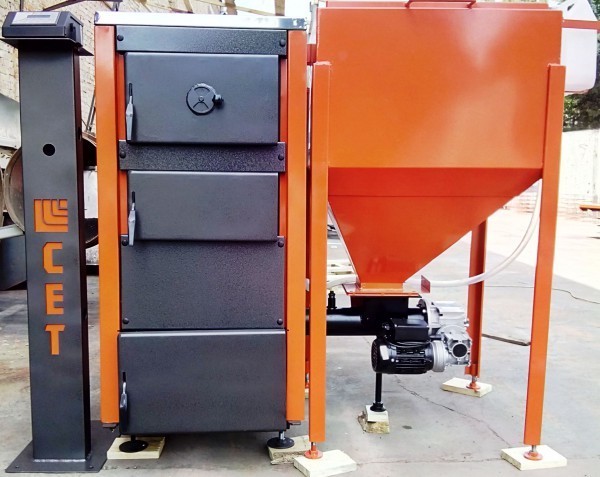
Photo 2. A massive solid fuel boiler that runs on pellets. It is considered to be a fairly economical device.
Advantages and disadvantages
The main advantage boilers is the efficiency factor. Most devices operate on different types of fuel, which reduces the cost of heating. Disadvantages of the equipment The need for regular cleaning of resins and soot is also a concern. In addition, some parts of the boilers operate on electricity, making them dependent on external factors.
Liquid fuel boilers
Liquid fuel is characterized by a high efficiency factor. Depending on the quality and composition of the fuel, Efficiency reaches 98%.
Liquid fuel boilers can operate on various types of fuel. The main raw materials are:
- fuel oil;
- diesel;
- diesel fuel;
- light oil;
- kerosene;
- oils.
Attention! Fuel must not contain fine abrasive particles. A mandatory condition for using fuel is its cleaning through a special filter.
Since fuels differ in density, composition and calorific value, the selection of raw materials is carried out depending on the tasks at hand. Some liquids leave soot when burned, which is why Constant cleaning of burners and boiler is required.
Operating principle
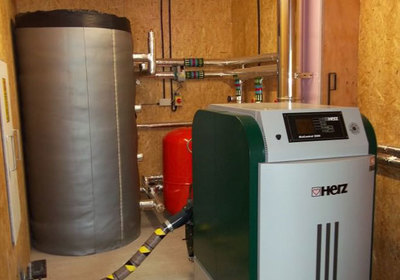
Operating principle of liquid fuel boilers similar to the gas unit system.
When the equipment is operating, fuel is sprayed under pressure, and forced ventilation creates an optimal ratio of combustible material and air.
The burners use a strictly specified amount of liquid, due to which raw materials are not wastedThe built-in automation ignites the mixture and controls the heating process of the coolant.
Pros and cons
Among the advantages liquid fuel boilers are distinguished by their autonomy, versatility, and long service life (more than 20 years). The disadvantages of the equipment include: high cost, need to build a boiler room, noise when the burner is operating.
Electric heating of country frame and wooden houses
Heating houses with electric boilers will be a good alternative to gas installations for buildings located in areas with uninterrupted power supply. In addition to electric boilers, other heating systems are installed in private homes in the form of underfloor heating or autonomous heaters.
This method is suitable for heating frame houses, if they are not connected to gas heating.
Electric boilers
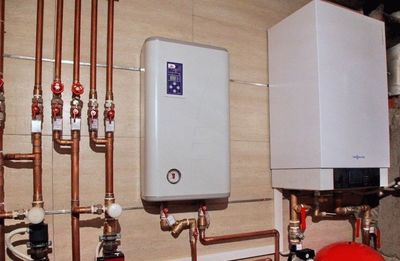
Electrical equipment is represented by three types:
- boilers with heating elements;
- induction electric boilers;
- Electrode boilers.
Most often, electric boilers with a heating element are installed in domestic heating systems.
The units are being released with two- or three-stage adjustment, which ensures rational operation of the equipment at any time of the year. They differ single-circuit and double-circuit heating element boilers. A system with two circuits will allow you not only to heat your home, but also to use hot water for personal purposes.
Electric heaters and underfloor heating
Electric heaters are selected depending on the area of the heated room. They cope with heating not only individual rooms, but also the entire building. The following types of equipment are produced:
- convector;
- infrared heater;
- electric fireplace;
- carbon heater;
- fan heater;
- oil heater.
In addition to electric heaters, heating systems may also include other equipment that depends on electricity. Warm floor is becoming increasingly popular among both home and apartment owners. The system is easy to install and does not require permits for installation.
Warm floors are represented by several types: heating mats, infrared film flooring, single-core and double-core cable. All options can independently heat the premises and are distinguished by their economy.
Operating principle
Electric boilers the coolant is heated in a special tank, after which the liquid flows through the circuits by gravity or with the help of a pump. Electric heaters, Depending on their type, they heat the air or liquid inside the equipment that heats the space. Warm floors evenly heat the air at height up to one and a half meters.
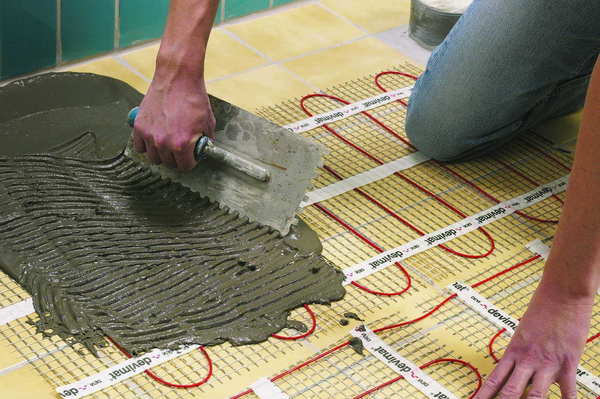
Photo 3. Installation of electric underfloor heating. A single-core cable is used as a heating source.
Advantages and disadvantages
The main disadvantage of heating devices is their dependence on electrical carriers. Among the advantages of electric heating, it is worth noting the efficiency, which, with proper installation of the equipment, reaches 99-100%.
A modern option is geothermal energy
Heat pumps are the most popular alternative used to heat private homes. The geothermal system uses a continuous source of heat, which provides long service life.
Operating principle
The coolant in the external circuit is heated by the ground up to 8-10 degrees after which it enters the heat pump. The equipment cools the liquid to negative temperatures, and directs the released heat to heating the house. The installation heats the room using low-temperature sources: radiators with regulators, heated floors, walls, skirting boards.
Pros and cons
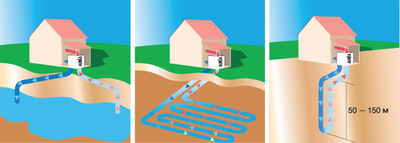
Advantages The advantages of geothermal systems are their environmental friendliness, renewable heat source and durability. Disadvantages heat pumps are characterized by high cost and complexity of laying external circuits.
What type of heating system is the most efficient and cost-effective?
Modern units economically heat both small houses and spacious rooms. The most profitable systems are considered to be installations in which heat sources can be continuously renewed. Heating with low-temperature equipment will reduce the costs of heating the coolant in the circuits. The underfloor heating system will ensure uniform heat distribution, using a minimum of resources.
Useful video
Watch a video that talks about the features of heating a house with electricity.
How to make a rational and economical system?
Combining different sources heat can provide inexpensive and practical heating of the house. Radiators with high heat output will allow maintaining a certain temperature regime without overspending raw materials. Alternative heat sources in combination with standard equipment will provide quality heating buildings without the use of gas.








